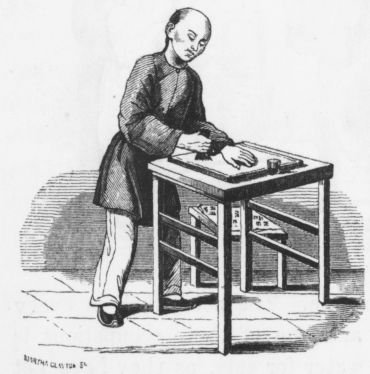In 1964-65, a mysterious killer murdered six prostitutes around London, leaving their nude bodies in various locations around the city or dumping them in the Thames.
His identity has never been determined, but he’s known as Jack the Stripper.
In 1964-65, a mysterious killer murdered six prostitutes around London, leaving their nude bodies in various locations around the city or dumping them in the Thames.
His identity has never been determined, but he’s known as Jack the Stripper.

Rejected dwarf names considered for Disney’s Snow White (1937):
Only about 3 people in 100 can name the seven dwarfs that were finally used.
“Genius is eternal patience.” — Michelangelo Buonarroti
“In the town of Ratisbon a certain young man who had an intrigue with a girl, wishing to leave her, lost his member; that is to say, some glamour was cast over it so that he could see or touch nothing but his smooth body. In his worry over this he went to a tavern to drink wine; and after he had sat there for a while he got into conversation with another woman who was there, and told her the cause of his sadness, explaining everything, and demonstrating in his body that it was so. The woman was astute, and asked whether he suspected anyone; and when he named such a one, unfolding the whole matter, she said: ‘If persuasion is not enough, you must use some violence, to induce her to restore to you your health.’ So in the evening the young man watched the way by which the witch was in the habit of going, and finding her, prayed her to restore to him the health of his body. And when she maintained that she was innocent and knew nothing about it, he fell upon her, and winding a towel tightly about her neck, choked her, saying: ‘Unless you give me back my health, you shall die at my hands.’ Then she, being unable to cry out, and growing black, said: ‘Let me go, and I will heal you.’ The young man then relaxed the pressure of the towel, and the witch touched him with her hand between the thighs, saying: ‘Now you have what you desire.’ And the young man, as he afterwards said, plainly felt, before he had verified it by looking or touching, that his member had been restored to him by the mere touch of the witch.”
— “How, As It Were, [Witches] Deprive Man of His Virile Member,” Malleus Maleficarum, 1487

“I do not think we should like to dine with a Chinese gentleman, or Mandarin, as he would treat us to strange dainties, as — a roast dog, a dish of stewed worms, a rat pie; or, perhaps, a bird’s-nest. But the bird’s-nest would be the best of the list, for it is not like the kind of bird’s-nests which you have seen, but is made, I believe, of the spawn of fish, and looks something like isinglass. It is the nest of a sort of swallow, is about the size of a goose’s egg, and is found in caverns along the sea shores; so it is not so bad as it seems at first. And the rats are as large and fat as some of our rabbits, being fed on fruits and grain, purposely for eating; as also are their dogs, for eating.”
— From The World’s Fair; or, Children’s Prize Gift Book of the Great Exhibition of 1851, Describing The Beautiful Inventions And Manufactures Exhibited Therein; With Pretty Stories About the People Who Have Made and Sent Them; And How They Live When at Home
Both Harry Potter and the Goblet of Fire and Harry Potter and the Half-Blood Prince set records as the fastest-selling books in history.
The “most admired people of the 20th century,” compiled by the Gallup Organization:

Tyrannosaurus rex closed its jaws with a force of 4 tons, the strongest bite of any dinosaur.
rutilant
adj. shining; glowing ruddily
Samuel Taylor Coleridge and William Wordsworth used to roam the hills and coast of southwest England on long night walks; eventually the local villagers began to whisper that they were spies for the French.
The government sent an agent to investigate; he reported that they were “mere poets.”